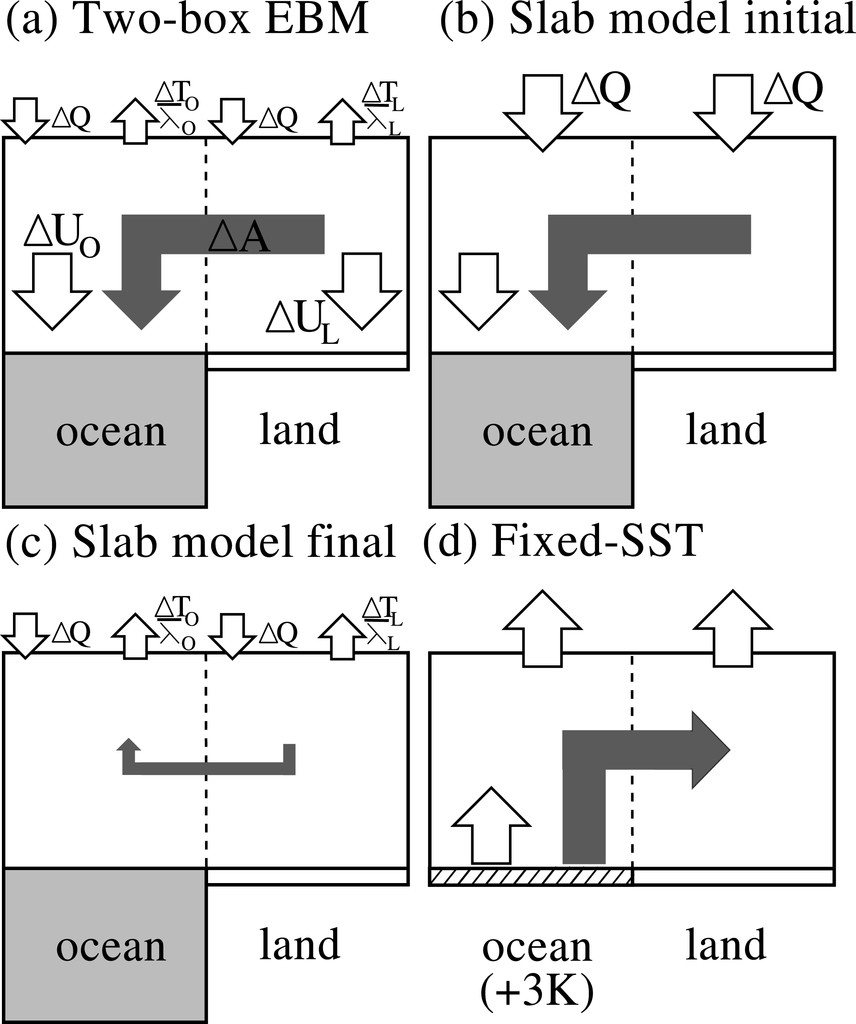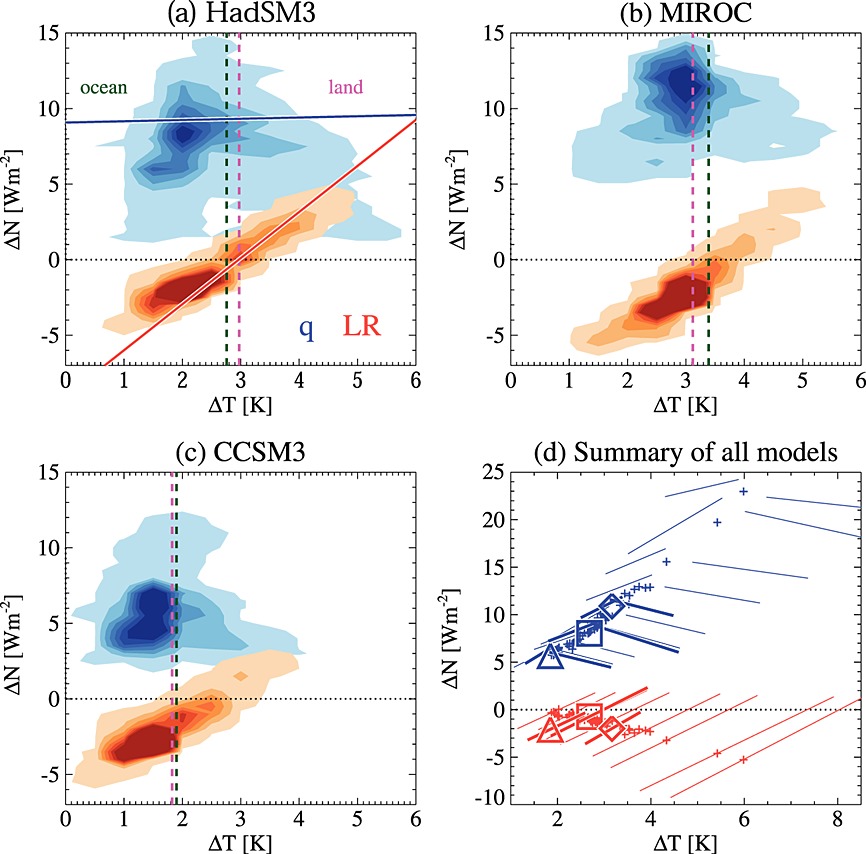Land-sea contrast

Under quite globally uniform forcing, surface temperature responses behave like local responses to the global mean radiative forcing, even away from equilibrium. In models, this means that simulated patterns of temperature change look similar under different forcing scenarios. In the real world, it means that land and ocean temperatures continue to increase in a constant ratio that we do not expect to change if warming accelerates or if it slows down. This is true even though the land shows a much smaller heat capacity to climate change than the ocean.
Read More ...Radiative forcing and response

I’ve done a fair bit of research on radiative forcing and feedbacks, especially short-term adjustment to forcing, but mostly not for a long time. I answered a challenge from Patrick Taylor at NASA Langley to explain the pattern of the regional tropical water vapour and lapse rate feedbacks. These don’t show a sharp anti-correlation like the tropical mean water vapour and lapse rate feedbacks across climate models, but they are largely explained by simple processes. Regional variations in the tropical lapse rate feedback in particular are determined by the difference in the varying tropical surface temperature and the fairly constant atmospheric temperature. This work was published as Lambert and Taylor, (2014).
Read More ...